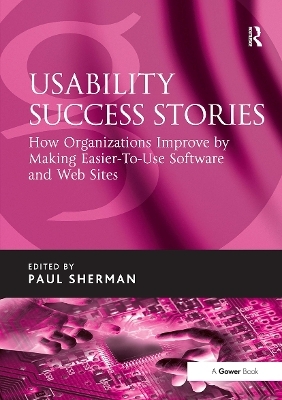
Usability Success Stories
Routledge (Verlag)
978-1-032-83769-7 (ISBN)
People spend increasing amounts of time and effort interacting with complex hardware and software products. Some of the products we interact with are easy to learn and easy to remember. Some are even a pleasure to use. Others are hard to learn, hard to use, and frustrate us at every turn. But it is not just the user that pays the cost in such cases. Poor usability also imposes significant costs on product producers. Companies that make hard-to-use products incur higher support costs, spend more on rework, and have less satisfied customers. These outcomes can be avoided by applying the techniques of usability engineering and user-centred design (UCD) during product development. This book shows how usability and UCD practitioners do this by studying users' needs and abilities, designing the product accordingly, and verifying the design through additional testing with users. Despite the positive return on investment for usability engineering activities, many organizations view usability engineering as a non-critical part of the product development process. This book seeks to change this by relating a number of cases where usability engineering contributed significantly to the solution of a business problem. Evidence is drawn from experiences within a range of private and public sector organizations showing how usability work can best be organized and executed within a business environment. The organizational factors that facilitate or impede the application of usability engineering are also discussed. The book clearly explains the barriers to be overcome as well as highlighting the factors promoting success. A wide range of applications are covered, including web-based e-commerce, medical devices and software, process control management systems, financial services applications, consumer desktop applications and interactive voice response systems. Usability Success Stories provides a valuable guide for business managers and technical staff as well as for practitioners within the field itself.
Paul Sherman, PhD is Director of User-Centered Design and Usability at Sage Software, and Vice-President of the Usability Professionals' Association. He was also a Lecturer at the University of Texas at Dallas, where he designed and taught a course sequence in Human-Computer Interaction for the School of Behavioral and Brain Sciences.
List of Figures
List of Tables
Preface by Whitney Quesenbery
Chapter 1 An Introduction to Usability and User-Centred Design
by Paul Sherman
Chapter 2 Tracking Ease-of-Use Metrics: A Tried and True Method for Driving Adoption of UCD in Different Corporate Cultures by Kaaren Hanson and Wendy Castleman
Chapter 3 Tales from the Trenches: Getting Usability Through Corporate
by Francis (Hank) Henry
Chapter 4 Redesigning the United States Department of Health and Human Services Web Site by Mary Frances Theofanos and Conrad Mulligan
Chapter 5 Creating Better Working Relationships in a User-Focused
Organisation by Elizabeth Rosenzweig and Joel Ziff Chapter 6 Using Innovation to Promote a User-Centred Design Process While Addressing Practical Constraints by Leslie G. Tudor and Julie Radford-Davenport
Chapter 7
Changing Perceptions: Getting the Business to Value
User-Centred Design Processes by Adam Polansky
Chapter 8
User Interface (UI) Design at Siemens Medical Solutions by Dirk Zimmermann and Jean Anderson
Chapter 9
Collaborating with Change Agents to Make a Better User
Interface by Paul Sherman and Susan L. Hura
Chapter 10
Learning from Success Stories by Paul Sherman
Index
| Erscheinungsdatum | 23.08.2024 |
|---|---|
| Verlagsort | London |
| Sprache | englisch |
| Maße | 174 x 246 mm |
| Gewicht | 640 g |
| Themenwelt | Kunst / Musik / Theater |
| Informatik ► Software Entwicklung ► User Interfaces (HCI) | |
| Sozialwissenschaften ► Kommunikation / Medien ► Buchhandel / Bibliothekswesen | |
| Technik ► Umwelttechnik / Biotechnologie | |
| ISBN-10 | 1-032-83769-1 / 1032837691 |
| ISBN-13 | 978-1-032-83769-7 / 9781032837697 |
| Zustand | Neuware |
| Informationen gemäß Produktsicherheitsverordnung (GPSR) | |
| Haben Sie eine Frage zum Produkt? |
aus dem Bereich


